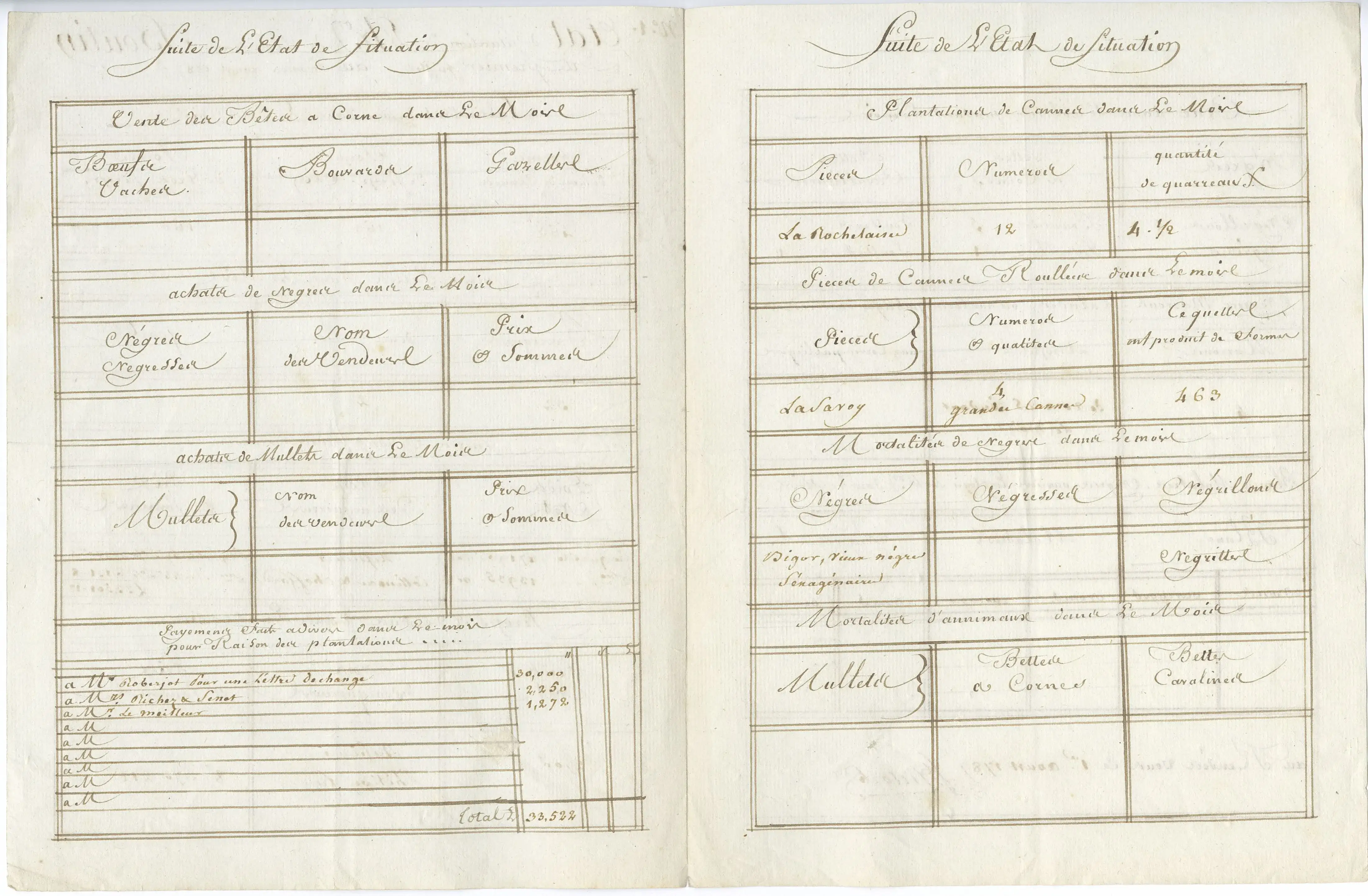

-
Visit
Opening hours From Tuesday to Sunday
October to March:
10:00 - 17:00
April to September:
10:00 - 18:00Contact emailEntrance feesAdults: CHF 15.00
Reduced rate: CHF 12.00
Children 6-15: CHF 6.00
Children 0-5: FreeAddressQuai Perdonnet 25
CH-1800 Vevey
Switzerland - Learn & Play
- About us
- Accessibility
Welcome !
Think. Learn. Interact.
Create an account in seconds and discover the amazing Alimentarium experience !


“Situation report” on Mr Boutin’s sugar cane plantation on the Cul-de-Sac plain
This accounting document lists the various sugar products produced and sold on the right-hand page. On the left-hand page, under the heading ‘Crüe dans le mobilier pendant le mois’, are listed the ‘nègres’ (sic), the horned animals and the ‘cavallinne’ animals. Next is the inventory of slaves who were unable to work during the month, either because they were ‘marooned’ or because they were in hospital or doing public duties. The number of slaves in hospital (20–25) suggests that it was a sizeable plantation. In his book on a neighbouring sugar plantation, the historian Paul Cheney refers to the cynical logic that led plantation managers to set up ‘hospitals’ where slaves would receive relatively better treatment for a few days. This reduced their mortality rate and, consequently, the costs involved in replacing them. Similarly, marronage (the temporary or permanent escape of slaves) was considered a necessary evil and was sometimes tolerated for short periods because the plantation owners were aware that it was impossible to keep all the slaves under their imposed yoke permanently.
Datasheet
- Materials and techniques: Paper
- Date: July–August 1787
Copyright Notice
This image is provided for personal, educational, or non-commercial use only. Any commercial use, reproduction, or distribution for profit is strictly prohibited.
© Alimentarium, Vevey — © Luis Lourenço / www.studio68.ch
